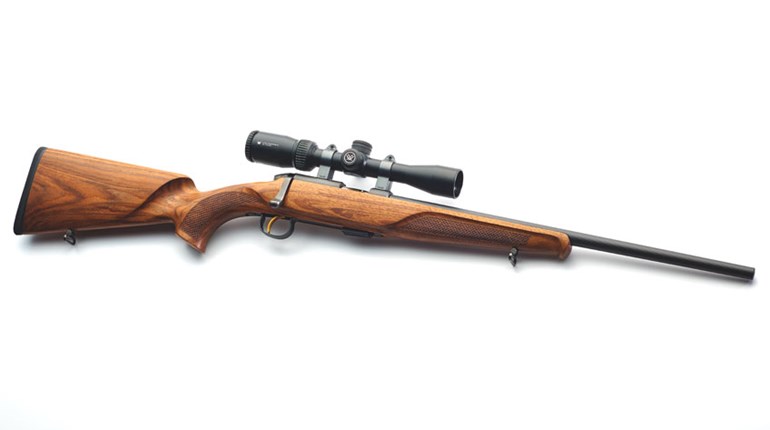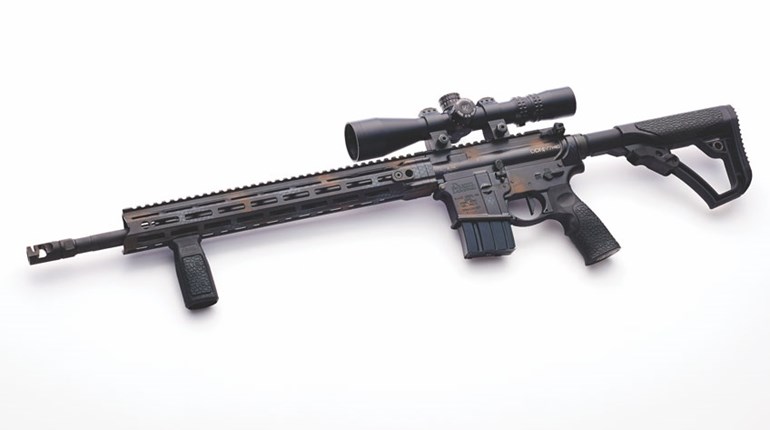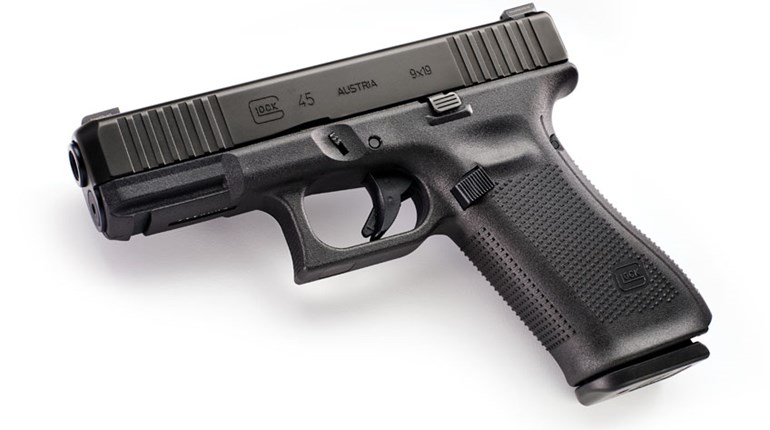
We’re “getting down to cases,” as the saying goes, in our discussion of home carry. This means a few questions are filtering in, and we’re frankly pleased with their quality: Carry Lifers are clearly thinking home carry eventualities through quite sensibly.
It also means it is time for a few clarifications before we move on. In no special order, here are some of the “best,” in the sense that responding and amplifying on the points they raise may be helpful.
Question: I’d never really considered what you’ve called “caching” of defensive firearms around my home, but the more I think about it, the more it appeals to me. My remaining concern is “readiness” vs. “access time.” If I lock up semi-autos in Hornady RaPid Safes or similar lock boxes as you suggest, couldn’t I leave it in Condition One (a round chambered)? This way, I’m not adding loading and action-cycling time to the somewhat greater time it takes to get to, and then open, my secure storage.
Answer: Although it’s a close-run thing, we come down on the side of “no.” An unattended Condition One (or Two) firearm poses other risks, and particularly if there are youngsters in the household. That’s especially true with physical access mechanisms—RFID fobs or keys which can be used without permission or guidance (as opposed to a combination of one form or another). Condition One storage gives up an under-appreciated safety mechanism—see the Editor’s Note below—that relates especially to the most popular type of defensive handgun.

The fix here is our de rigueur recommendation—practice. If you have a Hornady box, for instance, note that it will run without the AC power attached. This means that you can train with it at the range. In short order, we believe you’ll discover that opening the box, loading, charging and presentation can be done very rapidly with proper technique. Time yourself with a ready fob, and you’ll see four seconds from “Oh $@%&” to “bang” is easy to achieve, and closer to three seconds is very doable as long as you set up components correctly inside the box. Using the key mechanism is somewhat slower, even with a barrel-type key—that’s why we are such fans of the RFID methods and technology.
Our preferences notwithstanding, Condition Three storage is a shortcut that some consider acceptable. Here, the semi-auto has a charged magazine, but no round chambered. There’s no question it’s an advantage, slicing a second off those “par” times with relative ease. Many folks can get within a second of on-body carry draw times, in fact.
The problem here may be one of jurisprudence as much as anything else: Condition Three is illogically, incorrectly—but legally—considered to be a “loaded gun.” Nor is our pillory a mere opinion, but a matter of technical fact: A Condition Three semi-auto may not be made to fire with a single action—like pulling the trigger—even with all safeties disengaged, so how is it meaningfully loaded? This may be of no help whatsoever if you live in a mandated “safe-storage” locale, so choose carefully the state of any locked-up firearm.
An interesting sidebar here: There are governmental standards for devices of this type (see here), but they make no obvious mention about the condition of the stored firearm. Clears things right up, doesn’t it? Grrrrrrr.
Q: A question about the caching strategy: Are you seriously suggesting I have to go out and get two or three more identical firearms (I already have a Glock 19) to make this work? The wisdom of cross-programmable storage devices I understand, but two more G19s? This is a budget buster, especially when I have both a G17 and G27 already.
A. This is quite frequently the deal-breaker with caching. The “hobby” impulse, for lack of a better term—buying something “different” for the fun and educational value the difference represents—gets in the way of a good caching strategy. And don’t misunderstand: There’s nothing wrong with this until you decide to implement caching—own what you like. When you decide to cache, however, mix ’n match may actually become dangerous. It puts you and anyone else with access to the caches in the position of needing to master multiple and perhaps quite different firearms. The disadvantage this could represent in a defensive situation requires no explanation.
There’s no easy fix for this. We’d offer our own experience (here, near the end) as a negative case in point: However fun/useful/interesting it is to shoot many different types of firearms, it’s a serious downside to getting really good with any particular one of them. Need we say that “really good” should be your goal prior to any defensive/protective employment?
But there’s an “out” too, upon careful reading of the question. The three cachable firearms in question have all-but-identical controls, comparatively slight dimensional differences, and two of the three could use the same magazines. The slightly more difficult handling of the G27 can be reduced by using the longer magazines of the G22 or G23 (in .40 S&W, like the G27) or extended magazine base plates to give similar gripping purchase on the smaller gun.
Highly recommended would also be using the same sights on each pistol. These keep the sight picture and point of aim/point of impact as consistent as possible. Shot placement differences due to barrel length at defensive/protective distances are all but immaterial.
We’d also swap in a G26 (or another G19) for the G27 as soon as possible. This eliminates the possibility of a mix-up with mags or ammo (.40 S&W vs. 9 mm).
A final point before you ask: What about a Smith & Wesson M&P in one cache, a SIG Sauer P320 in a second, and an H&K VP9 in a third? Our answer is a very provisional, “Well, OK.” But we wouldn’t do it ourselves, and here’s why: As striker fired-systems, these work with a lot of similarities—all are top-quality, reliable, accurate firearms, and will feed and function with modern defensive ammo. All can be fitted with sights from the same manufacturers as well, so sight pictures can match.
But we’d be remiss not to remind you that this increases your training burden, and more than most folks would suspect: Being fast and accurate—the latter extra crucial at home—remains tougher with three firearms than one, or at least one brand as the original question suggests. Throw differing magazines and/or calibers into this mix, and perhaps you see why our view of this intermediate step is so unenthusiastic.
We absolutely cannot recommend any more “diversity.” In other words, we’re against a 1911 here, a revolver there, and a Glock by the bedside simply because those are what you have. Caching isn’t for you, or at least not yet. Get used to carrying the one you’re best with around the house.
Q. I hadn’t seriously considered caching, but it has some appeal. Looking around, I find several versions of lock boxes, even of the Hornady model you mentioned. The price differences aren’t inconsequential, though. Do I really need the RFID version at around $150-180, or is the key version (again, a Hornady) at $45 or so OK?
A. Fair question. In candor, however, we think RFID is the way to go for several reasons. First is the multiplicity of the RFID “keys”: They come in stick-ons, key ring and wristband versions, and are fast and sure with even modest practice. They have a keyed back-up as well.

Key-only versions can be fast too, although even with the self-centering, precise “barrel” (or tubular) key, this must be practiced. Note that the boxes themselves are the same, whatever the locking method.
The most important differentiator in our minds, however, is that we want one entry “mechanic,” not three (or however many caches you decide on). We don’t see any straightforward option for this with keyed versions: Three boxes equals three keys. And selecting the proper key under stress—even if they’re coded by color, say—is not appealing. We’re working to determine if same-keyed sets of boxes can be ordered, and we’ll let you know what we uncover.
RFID systems go the other way: A single key can open up to five boxes and vice versa. The speed and versatility justify the added cost in our view.
We hope this helps, and we’ll get back to some more of these good questions as we work through other aspects of home carry.
Until then, Carry on.
Editor’s Note: A quick look at historical data reveals that the quintessential villain of modern personal security—in the eyes of ban-‘em-at-all costs Progressives, at least—may actually have saved many thousands of lives beginning in the mid-1970s. We’re speaking of semi-automatic pistols of course, and a look at in-home accidents points to an unmistakable synchronicity: At very nearly the exact time when semis gained popularity in civilian use and revolvers entered a corresponding decline, these tragic mishaps began to decline as well, and have done so steadily ever since.
While we know of no research along these lines, there is a convincing correlation that may explain the phenomenon. The forerunners of semi-autos in the home defense role were those same revolvers, and as we’ve commented, wheel guns have many fine qualities, but safe and ready aren’t two of them. Gripping and pressing the trigger are natural—by design—and if an untrained person or a TV/movie-educated child runs across a loaded exemplar, comprehensive disaster can follow.
The same cannot be said of most modern semi-autos unless a round is chambered and the action cycled “hot.” There is generally at least one manual safety (and sometimes several) to be disengaged, and, with the exception of DA/SA designs, cocking is somewhat less obvious; that is, a separate action from trigger-only manipulation. Still, we would argue abandonment in Conditions One or Two is a bad idea. As we said above, even locking them up this way is problematic.
An auto-loader in Condition Three, however, presents a tricky hurdle to unauthorized (or untrained) users. Even with a loaded magazine in the gun, many adults and practically all children—we have never encountered a youthful exception in 40 years—are simply not strong enough to cycle semi/auto-loading actions to firing readiness until after they are old enough to be taught useful firearms safety. This is no justification for improper storage, but it does improve the “net” safety of auto-loading designs, and may substantially explain why accidents continue to fall even as ownership of the type continues to rise.
Frank Winn has been studying arms and their relationship to tyranny, meaningful liberty and personal security all his adult life. He has been a firearms safety/shooting instructor for more than 20 years, and earned state, regional and national titles in several competitive disciplines.
































